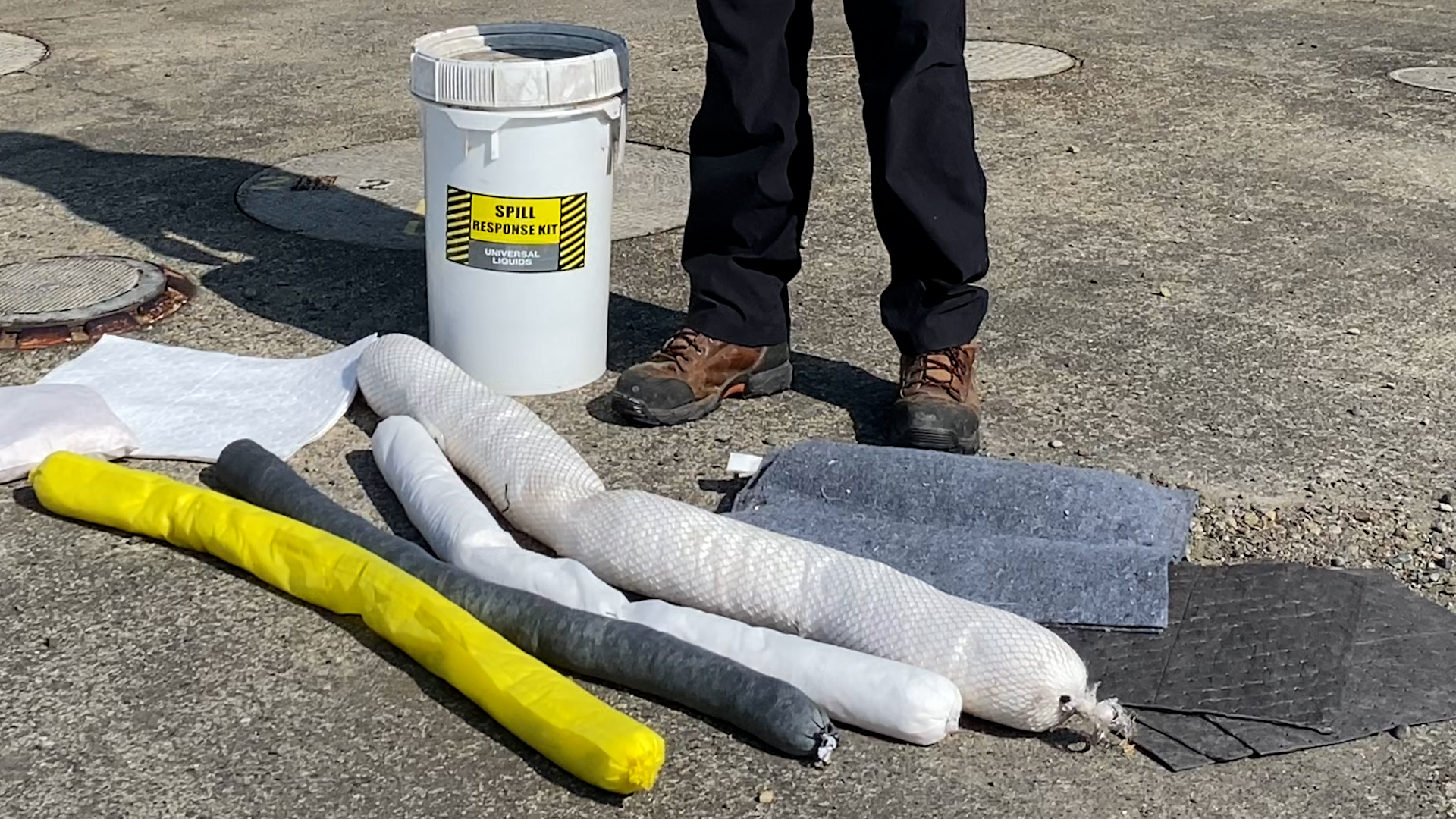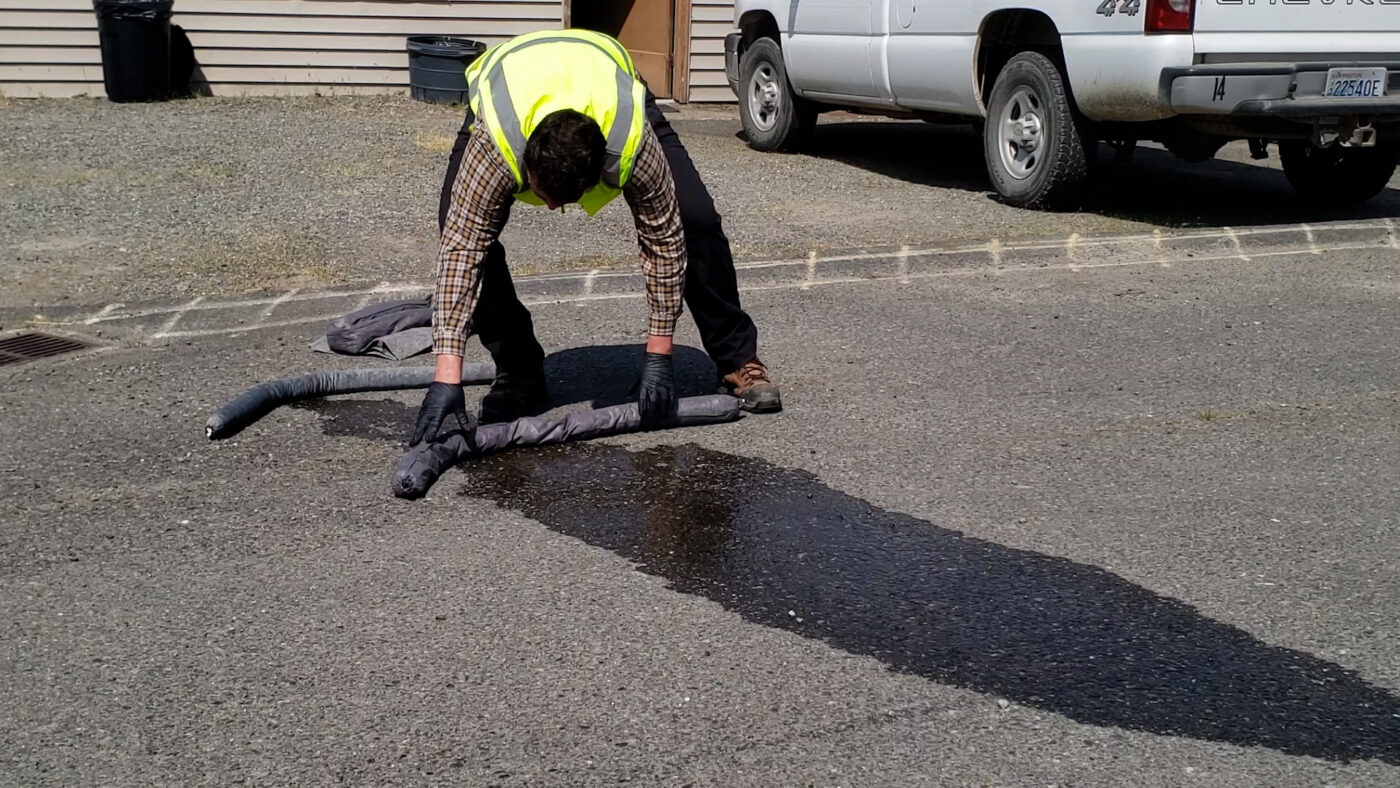Spills are an unfortunate reality on industrial sites, and it is important to know how to quickly respond and clean up a spill. Utilizing the best management practices for spill preparedness and spill clean-up could mean the difference between a minor incident and a costly cleanup effort.
Plan Ahead
Preparedness is the most important BMP for spill response. Several steps should be taken well before a spill occurs to limit the impact and ensure that the spill can quickly be contained.
Spill Kits should be well stocked and located throughout your facility in high-risk areas such as refueling areas and near chemical storage. Your kit should be stocked with enough material to handle the volumes you could encounter, and the absorbents you choose should be appropriate for the types of spills you may encounter. Read more about spill kits and absorbent materials in our Spill Kit post.
Spill Prevention and Emergency Response Plan (SPECP) should be in place and frequently reviewed as part of your SWPPP. This plan should outline all of the BMPs you have in place to prevent spills, the materials you will have on hand to clean up your spills, the procedures you have in place to clean and report spills, and a record of any spills that occur. Facilities with significant Oil handling may also require an SPCC.
Employee Training should also cover spill response. Staff should know the spill kit locations, proper safety protocols, and proper spill response procedures.

Spill Response Steps:
1. Evaluate the Spill
When you first notice a spill you want to take a few seconds to evaluate it. You want to quickly identify:
- What has been spilled– different materials may require different absorbents such as an oil-only absorbent for oil mixed with water.
- How much has been spilled– It is important to identify how much is spilled, as this can play a role in your response. Do you have enough absorbent on hand? Do you need to call in backup? Can I stop the source of the spill?
- Where is the spill– Identify stormwater conveyances, proximity to waterbodies, as well as the safety of nearby individuals.
- Can I safely handle this- you will want to evaluate the material spilled and your training and experience to determine to what degree you can manage this spill and what PPE is required.
2. Contain the Spill

With your evaluation in mind, it is time to contain the spill. There are many ways to contain a spill, and the method you use is reliant on the evaluation you made. Your goal is to limit the spread of the spill as much as possible. We want to protect nearby waterbodies and soil from contamination by:
- Stop the source of the spill: If the spill is ongoing, do your best to stop it. that may mean stopping a pump, closing a valve, or lifting an overturned container.
- Use plugs or plastic sheeting to cover nearby catch basin lids and protect stormwater conveyance systems
- Use socks or booms to stop the spread of a spill. If the spill is moving, use multiple levels of protection so that if one gets breached, there is one behind it.
3. Clean the Spill

With your spill contained, it is now time to clean up the spill. Use granular absorbents or absorbent pads and pillows to soak up the spilled material.
If using a granular or loose absorbent, spread over the spill area, and give it a bit of time to soak up the spill. Use a broom to work your loose absorbent into the spill and sweep it up, disposing it in a bucket or heavy-duty trash bag. Repeat this process as necessary.
If using absorbent pads, you should follow a similar method. Cover the spill in pads and give them time to soak up the material. Rub the spilled area with the pads to get into all of the nooks and crannies, repeat with a clean pad.
4. Reporting
After your spill is contained, you should be thinking about the reporting process. Your spill should not only be reported internally but will also likely need to be reported to the state via your regional ecology office. Spills into waterbodies or spills of hazardous or dangerous materials need to be reported immediately.
Read Ecology’s Spill Reporting Guidance Here
For more video content covering a wide range of stormwater topics, please visit our YouTube page!



